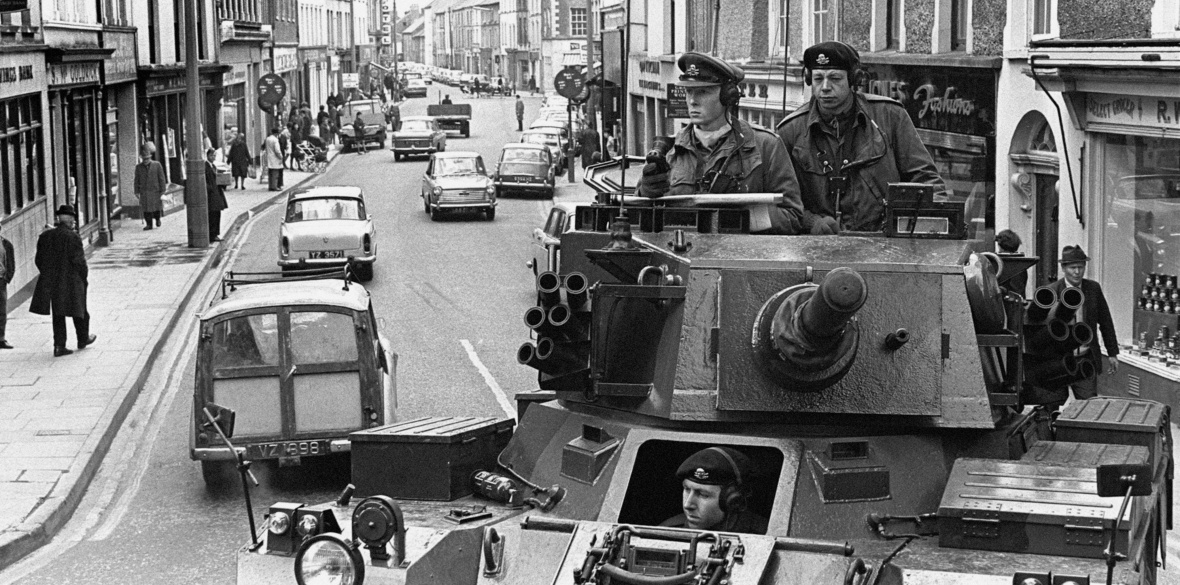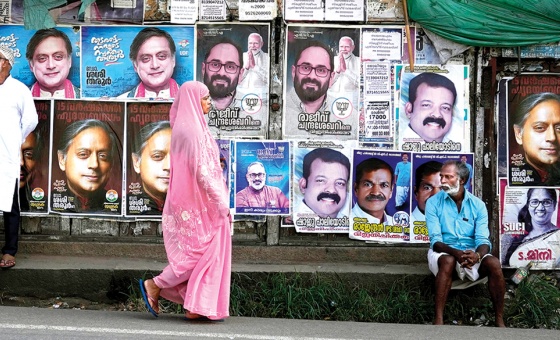This is the last article you can read this month
You can read more article this month
You can read more articles this month
Sorry your limit is up for this month
Reset on:
Please help support the Morning Star by subscribing here
IN politics, some things are predictable. For instance, when the opinion polls show Labour in front, up pops one of the usual suspects with another Jeremy Corbyn anti-semitism story.
By coincidence, when it comes to the uncovering documents to assist the families in the North of Ireland fighting for truth and justice, something similar occurs.
Only days after author Ciaran MacAirt uncovered a secret British army log, which alleged the brigade commander at that time, General Sir Frank Kitson, was guilty of collusion and cover-up of the McGurk’s bar bombing in December 1971, up steps Tory MP Johnny Mercer to try to hold Theresa May to ransom, in an attempt to prevent the families in the North of Ireland obtaining justice.
Talking on the BBC Radio 4 Today programme, Mercer, a former British army officer, stated he has withdrawn support for the government over the historical prosecution of servicemen and women. The MP for Plymouth stated he would only vote with his party on Brexit issues.
In his letter to the PM, Mercer said he could not support May’s legislative programme any further until the government makes some clear and concrete steps to end what Mercer calls “this abhorrent process.”
Although not reported within the mainstream media, possibly the uncovering of a British army log may have influenced Mercer to up his game to try to halt the process of uncovering the truth behind a number of deaths on innocent civilians by the security forces during the Troubles.
The log may not only prove the allegations of “collusion and cover-up” in an explosion that killed 15 civilians including children, but places a brigadier right at the top of the list.
During his interview, Mercer suggested that there were “those who seek to refight the conflict through other means.”
This comment alone is an insult to the many innocent victims, but yet again the statement goes unchallenged. For instance, who does Mercer mean by “those”? Who is Mercer alluding to? The families?
Once again, the innocent victims who were killed or injured by security forces, by accident or otherwise, are thrown into the pot with all other killings, albeit members of loyalist or republican organisations.
Those that are trying to defend the indefensible would have the general public believe that allegations of collusion, cover-up was only was the stuff of fantasy in an Andy McNab novel. However, the evidence is well documented and is there for all to see if they wish to do so.
For example, take the incident in Ballymurphy on the morning of April 15 1972 which began when an RUC constable contacted the operations room of Henry Taggart Memorial Hall, where C Company of the King’s Own Scottish Border (KOSB) Regiment was based, to inform them he believed he had just spotted a wanted Provisional IRA man James Bryson.
Bryson was well known to the British army and was thought to have been involved in a number of shootings, including the shooting of a lance corporal from the KOSB earlier that month. At 7.30am on hearing the report, a lieutenant decided to investigate the sighting.
Dressed in civilian clothes and driving an unmarked vehicle, the lieutenant, accompanied by a sergeant and a private soldier, began a search for the suspect.
After driving around with no success, they were leaving the Ballymurphy area when the lieutenant finally spotted the man thought to be Bryson talking to another man.
Seeing the armed men emerge from the car, the two men ran off, pursued by the two soldiers.
The “company log” of the event states that the lieutenant gave chase to Bryson, who had fired a number of shots at the lieutenant before tripping and dropping his 9mm Star automatic pistol (and states the serial number) and two magazines containing live rounds.
The man thought to be Bryson made his escape while the second man, later named as Gerard Conway, was hospitalised after suffering gunshot wounds to both legs. All this sounds very plausible and believable, that is until you discover what actually occurred.
On the day in question, two brothers John and Gerard Conway were doing what they did every Saturday morning, walking to the bus stop to catch a bus to the city centre were they ran a fruit and veg stall.
While they stood talking, two armed men emerged from a fast-approaching car. Believing they were loyalist gunmen, they ran for their lives.
While Gerard Conway was hit in the legs, his brother managed to escape but attended hospital later with a wound to his buttock.
By 10.50am a report was sent to army headquarters in Northern Ireland that John Conway had also been admitted to hospital and that “he may be the chap they thought was Bryson.”
Within four hours of the incident, it was clear at British army command level, that the shooting of the Conway brothers was obviously a clear case of mistaken identity.
However, once again instead of coming clean on the events, the commanders opted instead for total denial and spin, leaving an RUC spokesperson two days later to tell the Irish News there were no police or troops in the area at the time and the shooting was most likely “IRA justice.” A complete lie.
Unfortunately, it’s not just the mistaken identity that is the problem or the cover-up.
What about the alleged shots fired at the soldier by the man thought to be Bryson?
The pistol and loaded magazines were recovered so surely his fingerprints would be all over them, plus forensics on their clothing?
Yet no charges were ever brought against the two men.
From my experience it is simply unthinkable to suggest that if either man had used the gun that was recovered, that they wouldn’t have been subjected to a search, arrested, charged and interrogated before being locked up.
Yet none of this happened. I will leave the reader to reach their own conclusion why.











